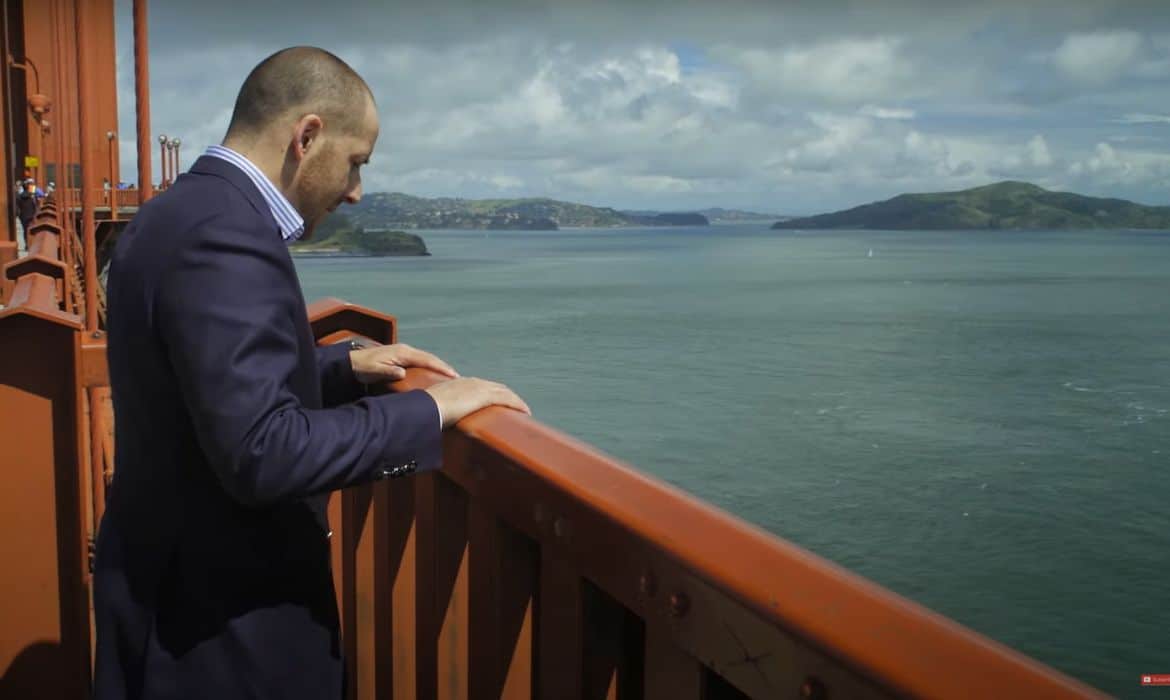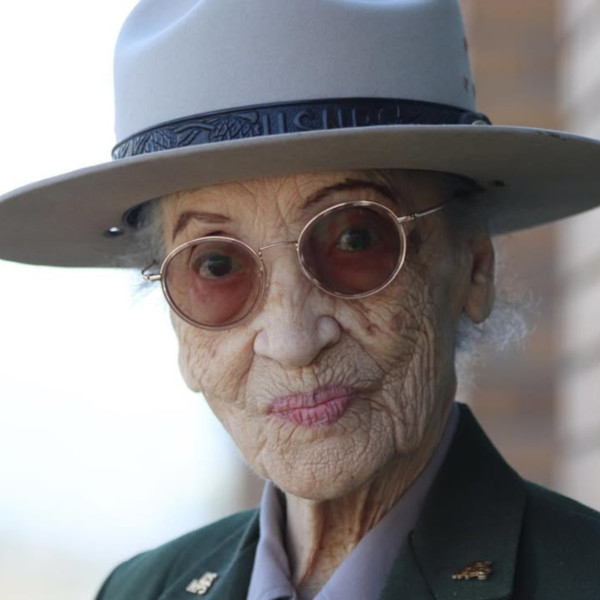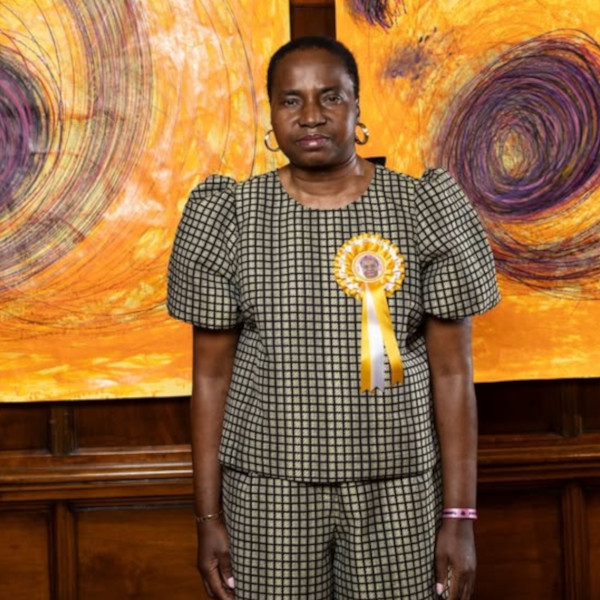
Photo: Screenshot from YouTube
This post may contain affiliate links. If you make a purchase, My Modern Met may earn an affiliate commission. Please read our disclosure for more info.
On September 25, 2000, 19-year-old Kevin Hines approached the Golden Gate Bridge. He'd arrived on a bus, determined to end his own life. Unfortunately, he was not alone in his thoughts. According to CNN, San Francisco's iconic bridge is the number one suicide spot in the United States and the second most used spot in the world. The bridge has a 98% fatality rate, but Hines, who suffers from bipolar disorder, was one of the lucky ones. He survived.
In 2018, Hines told his story to ABC News, recalling the feeling he had the moment that he jumped. “Instant regret, powerful, overwhelming,” he remembers feeling. “As I fell, all I wanted to do was reach back to the rail, but it was gone. The thoughts in those four seconds, it was ‘What have I just done? I don't want to die.'”
Luckily for Hines, he turned around in mid-air and hit the water in a seated position. While he shattered three vertebrae in the fall, he was still alive. While he soon surfaced, it's no surprise that given his injuries, it was hard to stay afloat. That's when something incredible happened.
“Something began circling beneath me, and I mean something very large, very slimy, and very alive,” Hines recalls. “And I'm freaking out, and I'm thinking ‘You've got to be kidding me, I didn't die jumping off that stupid bridge, and a shark is going to eat me?.' I realized I'm not trying to stay afloat. I'm now lying on my back, being kept buoyant by this thing.”
Whatever it was, it kept Hines afloat until he was rescued by the Coast Guard. It was only later when he received a letter from someone who had witnessed the entire event from the bridge, that he discovered what had come to his rescue.

Photo: appalachianview/Depositphotos
“Kevin, I'm so very glad you're alive,” the letter read. “I was standing less than two feet from you when you jumped. Until this day, no one had told me whether you lived or died. By the way, it wasn't a shark. There was a sea lion and the people above looking down believed it to be keeping you afloat.”
While the Coast Guard officer who saved Hines didn't see the sea lion, he told ABC News that a second witness came into the station after the rescue and confirmed that they'd also seen the animal help Hines.
Today Hines, who wrote a book about his experience, is a mental health advocate who travels the world speaking about suicide prevention. He now manages his bipolar disorder with medication and has gone on to get married. And while he still occasionally struggles with dark thoughts, he now has the tools to reach out to work through these issues.
Hines is also one of many who have pushed for a suicide barrier on the Golden Gate Bridge. In 2014, funding was approved for a stainless-steel safety net to be fabricated and installed under the bridge. While completion was estimated for 2021, the project was delayed due to ballooning costs and the sale of the original firm that won the build contract. It's now estimated to be completed in December 2023, at a cost of $400 million—nearly double the original estimate. Still, it's a day that can't come soon enough in Hines' eyes.
When he first saw pieces of the net installed, he was moved to tears. “That bridge is a harbinger of death, as beautiful as it is, but it won’t be after 2021,” he said in 2019. And while his dream won't be realized until later this year, the full completion of the net will surely bring him and others who have grappled with the impact of suicide great solace.
As he makes it his mission to bring more awareness about mental health, Hines is very active in posting videos on YouTube and also hosts a podcast. In 2018, he released a documentary about his life, Suicide: The Ripple Effect. The film, which has been viewed by half a million people across seven countries, is holding a free virtual screening on March 21, 2023. If you are interested in viewing the film, please register online as there is limited capacity.
If you or someone you know has suicidal thoughts, please reach out for help. You can find a helpline in your area by visiting the International Association for Suicide Prevention helpline. If you're in the United States, you can dial 988 to speak with a mental health professional, 24/7, in English or in Spanish. The lifeline also uses Language Line Solutions to provide translation services in over 250 additional languages.
When Kevin Hines was 19 years old, he survived a jump from the Golden Gate Bridge.
Now, he is a mental health advocate that speaks about suicide prevention.
Suicide: The Ripple Effect is a film that follows his journey.
Related Articles:
Powerful Suicide Prevention Campaign Challenges What Suicidal Looks Like
UNICEF Reports That 1 in 7 of the World’s Youth Has a Mental Health Diagnosis
Mental Health Lifeline (988) Is Reaching More People in Need, Early Data Suggests
Study Says Walking in Nature Can Reduce Negative Feelings Among Those With Depression






















































































